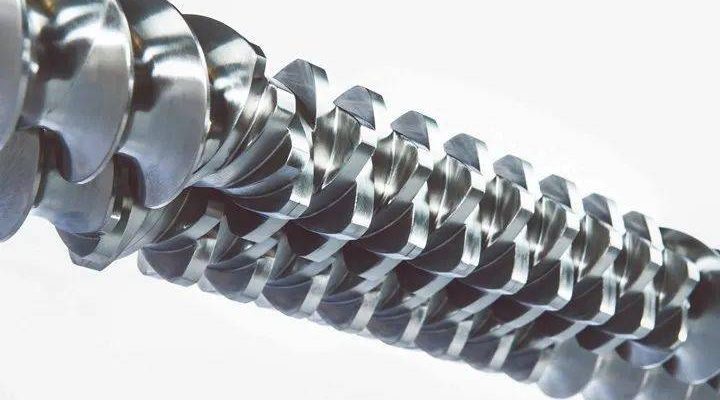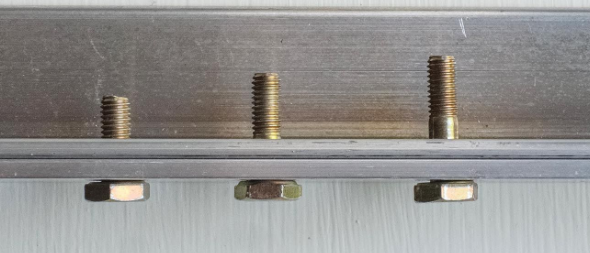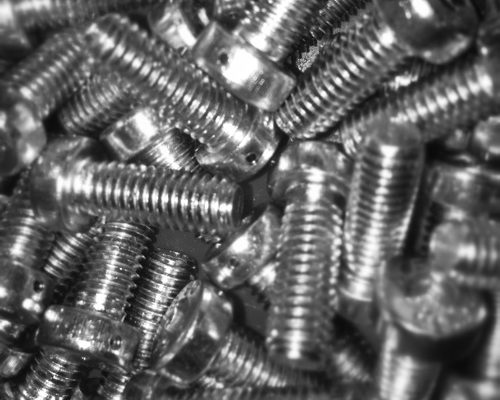
What Is A Rod End Bolt
Used in various machinery, it connects pivoting and rotating components. Made from high-strength steel, it typically withstands loads up to 30,000N and has diameters ranging from 6mm to 30mm.
Main Types
Common types of rod end bolts include spherical bearing type, self-lubricating type, and stamped end type.
Spherical bearing type rod end bolts have high rotation and swinging functions. They are usually made of high-strength steel, with diameters ranging from 6mm to 30mm, and can withstand axial loads of up to 30,000N or more.
Self-lubricating type rod end bolts are suitable for machinery requiring long-term stable operation. They typically use polytetrafluoroethylene (PTFE) or bronze as self-lubricating materials, with a service life of over 50,000 hours.
Stamped end type rod end bolts are generally made of carbon steel. After heat treatment, their strength reaches grade 8.8, with diameters mainly ranging from 5mm to 20mm. For example, Luoyang LYC Bearing Co., Ltd. produces a large number of these economical rod end bolts, capturing a market share of 40%.
Functions and Uses
Spherical bearing type rod end bolts are mainly used in equipment requiring high precision and high rotational performance, allowing components to rotate freely in multiple axial directions, reducing wear and increasing equipment lifespan. For example, in Boeing aircraft manufacturing, spherical bearing type rod end bolts are used in the landing gear connections.
Self-lubricating type rod end bolts are often used in agricultural machinery and construction equipment because their self-lubricating properties can reduce friction and extend service life. For example, John Deere’s large combine harvesters use self-lubricating type rod end bolts, significantly improving operational efficiency and maintenance costs.
Stamped end type rod end bolts are generally made of carbon steel and are suitable for scenarios with low requirements but large usage volumes. The stamped end type rod end bolts produced by Luoyang LYC Bearing Co., Ltd. hold a 40% market share.
Choosing the right type of rod end bolt can enhance equipment performance and reduce maintenance costs. For instance, in industrial robots, the combination of spherical bearing type and self-lubricating type rod end bolts improves the flexibility and durability of the robots.

Selection and Installation
Select the appropriate bolt specifications according to the specific application scenario by referring to the load table. For example, in an industrial automation project, choosing spherical bearing type rod end bolts with a rated load of 50,000N ensures safe operation of the equipment under high loads.
In humid or corrosive environments, such as marine engineering, rod end bolts commonly use stainless steel materials to resist seawater corrosion, with a service life of up to 20 years.
Ensure the installation hole size is accurate, avoiding it being too large or too small. For example, in automobile manufacturing, the tolerance of the installation hole is generally controlled within ±0.01mm.
During tightening, ensure each rod end bolt reaches the designed tightening torque. For instance, in aircraft assembly, Boeing requires that the tightening torque of each rod end bolt must not exceed a 5% error. As a senior aviation engineer said, “Precise installation and tightening are the foundation of flight safety.”
Adjustable rod end bolts usually have a threaded adjustment mechanism, allowing for fine-tuning after installation to improve equipment flexibility and adaptability. In a robotic automation project, using adjustable rod end bolts enables precise positioning and operation of the robotic arm, enhancing work efficiency.
High-performance rod end bolts are expensive, but their long lifespan and low maintenance costs can bring long-term benefits to enterprises. For example, a well-known automobile manufacturer chose high-end self-lubricating type rod end bolts. Although the unit price is high, their long service life reduces replacement and maintenance costs.



